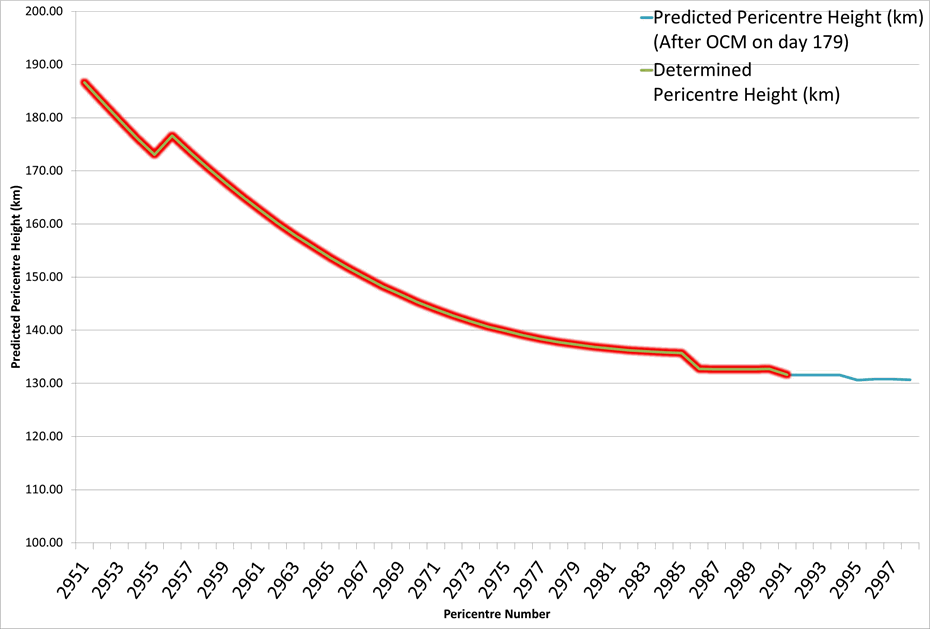Update contributed by the VEX team – Ed.
Here’s the latest plot showing the lowest altitudes reached by Venus Express on each of its aerobraking orbits.
Yesterday morning, 2 July, the spacecraft performed another manoeuvre designed to lower the pericentre altitude by 0.8 km.
This pericentre lowering is being performed in order to target higher atmospheric densities; the highest dynamic pressure (drag force) experienced by the spacecraft so far is 0.45 N/m2; the VEX team is aiming higher, trying to reach dynamic pressures of over 0.50 N/m^2. Atmospheric density at pericentre can vary by over 30% from one orbit to the next, making it difficult to know what atmospheric density will be reached on the next aerobraking pass…


Discussion: 2 comments
Fantastic achievement! Loking forward to follow this event after 8 years flight in space. Slow, but steady descent of a spacecraft into the Venus atmosphere.
it would be interesting to see a graph of the evolution of the apoapsis during aerobraking. how rapidly is it decreasing?